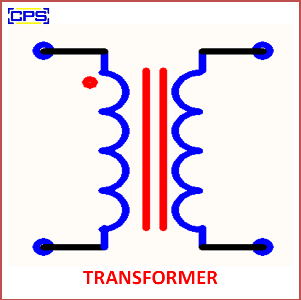A Transformer is an electrical device used to transfer electrical energy between two or more circuits through electromagnetic induction. It can increase (step up) or decrease (step down) voltage levels, allowing the efficient transmission and distribution of electrical power. Transformers work with alternating current (AC) and are commonly used in power grids, electrical devices, and communication systems.

Key Features of a Transformer:
- Core:
- Made of laminated iron or other magnetic materials that concentrate the magnetic field to improve efficiency.
- Windings:
- Primary Winding: The coil connected to the input (AC voltage).
- Secondary Winding: The coil where the transformed voltage is output.
- Magnetic Induction:
- Electrical energy is transferred from the primary to the secondary winding through a shared magnetic field generated by the primary winding.
Working Principle:
- When AC voltage is applied to the primary winding, it generates a magnetic field in the core. This magnetic field induces a voltage in the secondary winding due to electromagnetic induction. The voltage induced in the secondary depends on the ratio of the number of turns in the primary and secondary windings.
Types of Transformers:
- Step-Up Transformer:
- Increases voltage from the primary side to the secondary side.
- Step-Down Transformer:
- Decreases voltage from the primary side to the secondary side.
- Isolation Transformer:
- Provides electrical isolation between input and output, typically used for safety and noise reduction.
- Autotransformer:
- Has a single winding that acts as both the primary and secondary, often used for voltage regulation.
- Instrument Transformers:
- Used to measure electrical quantities (e.g., current or voltage) in high-voltage systems.
Applications of Transformers:
- Power Transmission:
- Used in power stations and grids to step up or step down voltage for efficient long-distance transmission.
- Electrical Devices:
- Found in chargers, power supplies, and devices to convert voltage levels as required.
- Audio and Signal Processing:
- Used in audio systems and communication devices to adjust signal levels.
- Industrial Equipment:
- Supply appropriate voltage levels to machinery and control systems.
Advantages:
- Efficiently transfers electrical power without the need for mechanical parts.
- Provides electrical isolation for safety and noise reduction.
- Enables voltage adjustment for optimal power usage in various applications.
Disadvantages:
- Limited to AC circuits, as they do not work with direct current (DC).
- Can be bulky and heavy, especially in high-power applications.
- Losses due to resistance in the windings and core losses.
